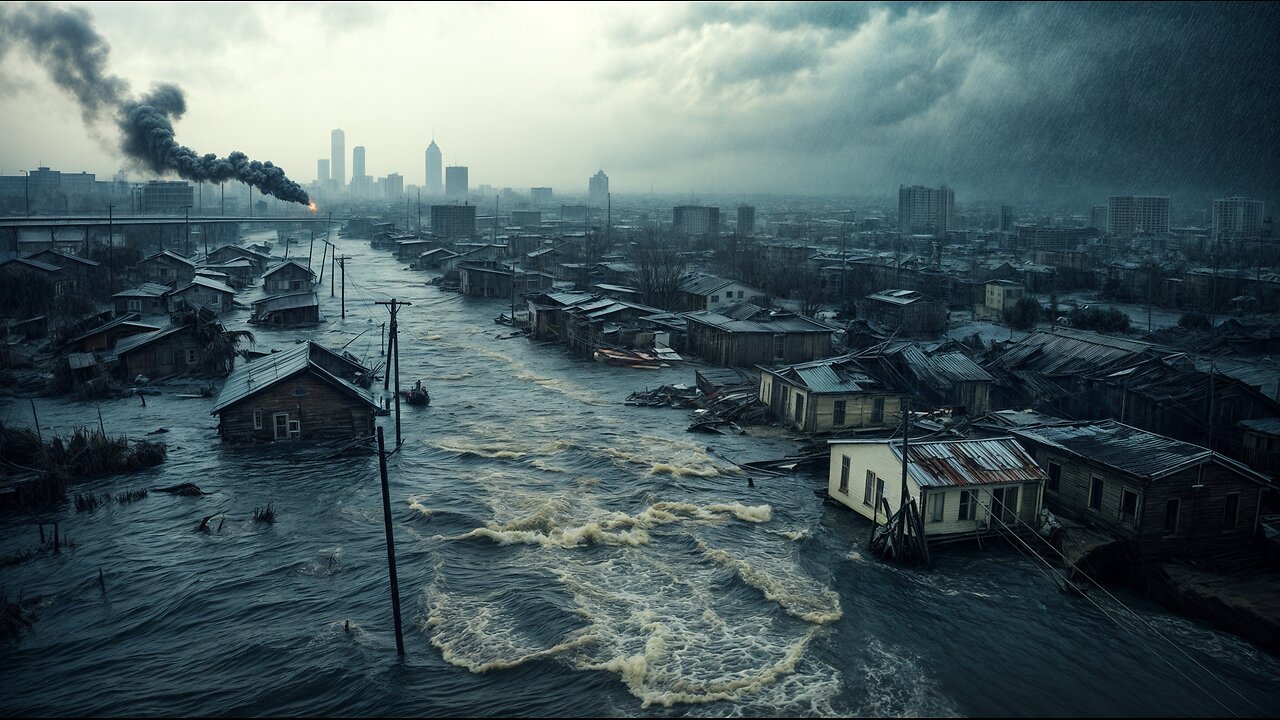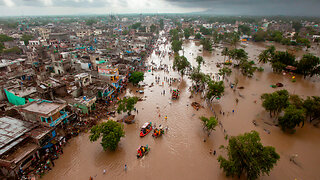Premium Only Content

USA NOW! Deadly Hurricane Francine Wreaks Havoc in New Orleans. Record Rainfall!
Tropical Hurricane Category 2 "Francine" struck Louisiana, USA, on the evening of September 11. After rapidly intensifying, it made landfall in Terrebonne Parish with wind speeds up to 100 mph.
The storm left hundreds of thousands of homes and businesses without power. By the following morning, nearly 400,000 people in Louisiana were without electricity, and another 60,000 were affected in neighboring Mississippi.
A storm surge caused serious issues for eastern Louisiana and the Mississippi coast. After making landfall, Francine quickly weakened to a tropical depression, bringing heavy rains and flood warnings to 10 million people.
The New Orleans metropolitan area experienced over a month’s worth of rainfall within a few hours. In some areas, 0.5 inches of rain fell in just nine minutes. The massive amount of precipitation posed a significant threat to residents. In Thibodaux, over two dozen people, including young children, were rescued from water traps.
The New Orleans airport recorded 7.3 inches of rain, making it the second wettest September day on record. All flights were canceled until Thursday morning.
Francine caused severe flooding in Morgan City, St. Mary Parish. There were reports of damaged houses, fallen trees, and downed power lines.
St. Charles Parish also suffered extensively, with over 350 structures inundated.
Weakening to a post-tropical cyclone, Francine moved inland, posing threats of tornadoes, heavy rain, and flooding to Mississippi, Arkansas, Tennessee, Alabama, and Georgia.
There are certain aspects of Hurricane Francine’s behavior that are worth noting: its unexpectedly rapid intensification to a Category 2 hurricane before landfall and the massive amount of precipitation it brought, which caused sudden, life-threatening floods over a large area.
This behavior of the hurricane reflects the general trend of tropical hurricanes in recent years, which are becoming more intense and unpredictable. And given the progression, it becomes obvious how dangerous they will become for people in the near future, if urgent measures are not taken to help people withstand the onslaught of the elements.
Fortunately, scientists have already developed technologies to address this issue effectively.
For more details, watch the popular documentary: "Water From Air: The Path to Saving Humanity."
-
 3:09
3:09
AllatRa TV
5 days agoMonsoon Chaos: Deadly Floods Strike India and Pakistan
60 -
 1:21:38
1:21:38
VapinGamers
1 hour ago $0.46 earnedTools of the Trade - Of Thumbnails and Titles, What's Important? - !rumbot !music
7.4K -
![Mr & Mrs X - [DS] Trafficking Empire – How Epstein Built His Web of Wealth and Deceit:Part 1 - Ep 5](https://1a-1791.com/video/fww1/f0/s8/1/o/k/J/d/okJdz.0kob-small-Mr-and-Mrs-X-DS-Trafficking.jpg) 52:11
52:11
X22 Report
3 hours agoMr & Mrs X - [DS] Trafficking Empire – How Epstein Built His Web of Wealth and Deceit:Part 1 - Ep 5
70.1K15 -
 1:13:18
1:13:18
Wendy Bell Radio
7 hours agoPet Talk With The Pet Doc
42.4K62 -
 LIVE
LIVE
dieseldesigns
5 hours agoExploring Labs In the DARK! // Abiotic factor
20 watching -
 LIVE
LIVE
BBQPenguin_
4 hours agoDragonball Z - The Android Saga
121 watching -
 LIVE
LIVE
Total Horse Channel
5 hours ago2025 URCHA Futurity | Derby & Horse Show | Saturday
35 watching -
 LIVE
LIVE
DynastyXL
5 hours ago🔴LIVE: Fortnite The Comeback Stream Starts Here🎃
45 watching -
 1:38:57
1:38:57
njgaming23
3 hours agoCoffee and Morning vibes #rumbletakeover
9.52K -
 1:09:19
1:09:19
Ami's House
2 days ago $18.19 earnedWhen Defending Israel Backfires: Are We Pushing Our Last Friends Away? With Karys Rhea
181K189